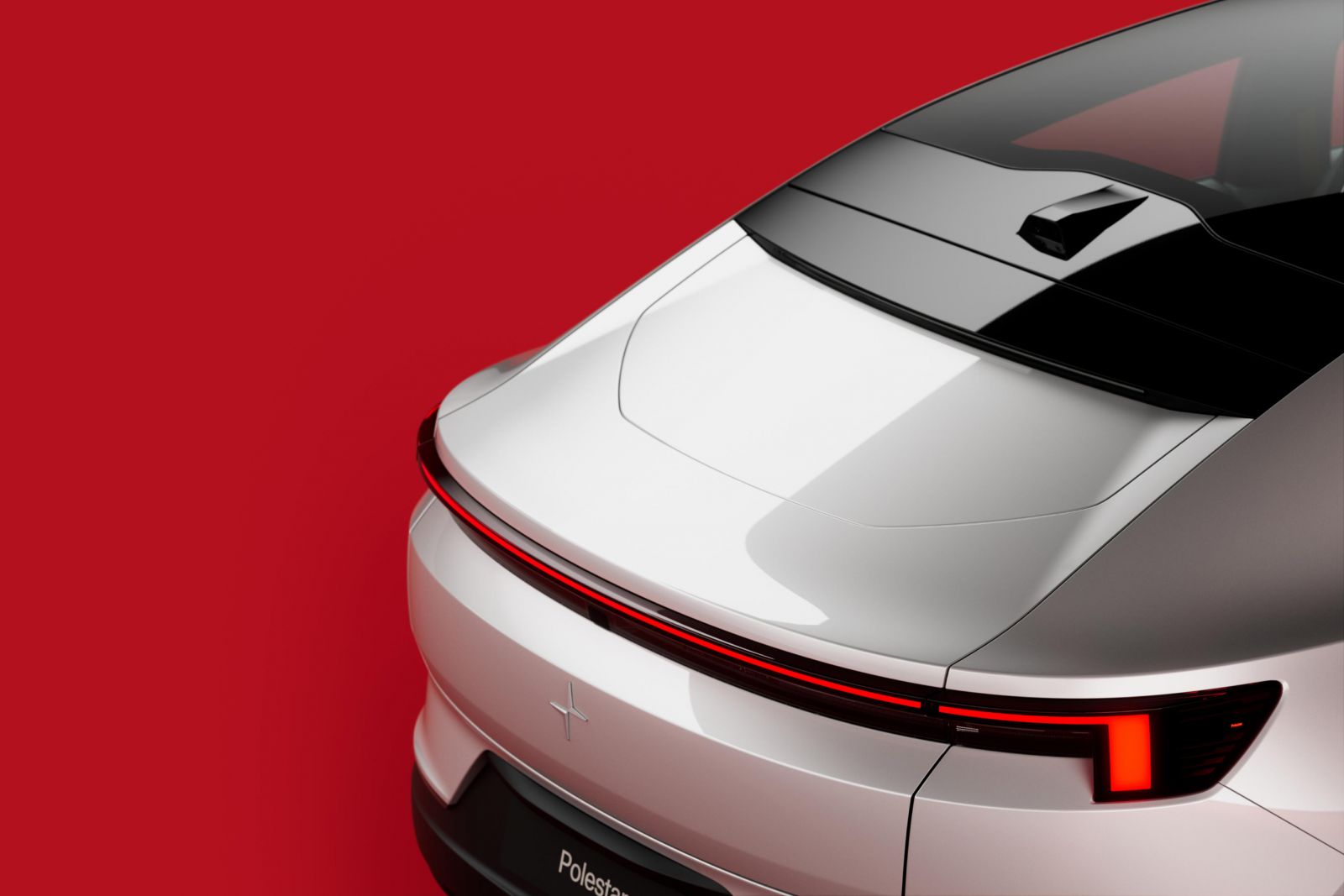There was one notable omission when Polestar revealed its latest car – the rear windscreen.
Across the range, the Polestar 4 coupe SUV will feature sheetmetal that extends to the back of the panoramic glass sunroof, eliminating the rear windscreen entirely.
The driver can see what’s happening behind them using a wide-angle camera mounted on the roof, which projects a live feed into the cabin. It’s technology that was previewed for Polestar on the Precept concept car, and features on cars ranging from the Maserati MC20 to Le Mans endurance racers.
Polestar CEO (and ex-Volvo head of design) Thomas Ingenlath told Australian media the unique solution solves “a dilemma that modern car design has ended up in”.
Mr Ingenlath said the camera allows a “perfect, great view in the inner mirror to the rear” relative to conventional coupe-crossovers, while “at the same time enabling a spacious, aerodynamic design of the rear compartment”.
“This an unconventional aesthetic that results out of that, which we feel is very interesting, great, new design.”
Mr Ingenlath confirmed a version of the same design cue will feature on the Polestar 5, a sports car that’ll follow in the footsteps of the Precept concept.
The Polestar 4 has a smaller body, less ground clearance, and actually rides on different underpinnings to the 3 – where the 3 shares its SPA bones with the Volvo EX90, the 4 is built using the SEA architecture rolling out to brands under the Geely umbrella.
It measures up at 4839mm long, 2139mm wide (incl. mirrors) and 1544mm tall, with a 2999mm wheelbase, and will be offered in two flavours.
The first is the Long range Single motor, which mates a 200kW/343Nm motor on the rear axle with a 94kWh (usable) lithium-ion battery pack for a claimed range of “up to 600km”.
The second is the Long range Dual motor, which adds a motor on the front to the mix for 400kW of power, 686Nm of torque, and “up to 560km” of range. Owners can choose between Range and Performance drive modes based on their mood, and the 100km/h sprint takes a claimed 3.8 seconds.
Both models can recharged at up to 200kW when hooked up to a DC public fast charger, good for a five to 80 per cent charge in 32 minutes. The car is capable of 22kW AC charging, along with vehicle-to-load.
Kerb weight is between 2232 and 2351kg, and both models have 15L of storage under the bonnet, and a further 500L in the boot.
The rear-wheel drive model can tow 1500kg, while the more powerful dual-motor model will tow 2000kg.
Launch timing for Australia hasn’t been confirmed; Polestar says details for global markets will be confirmed in 2024.



